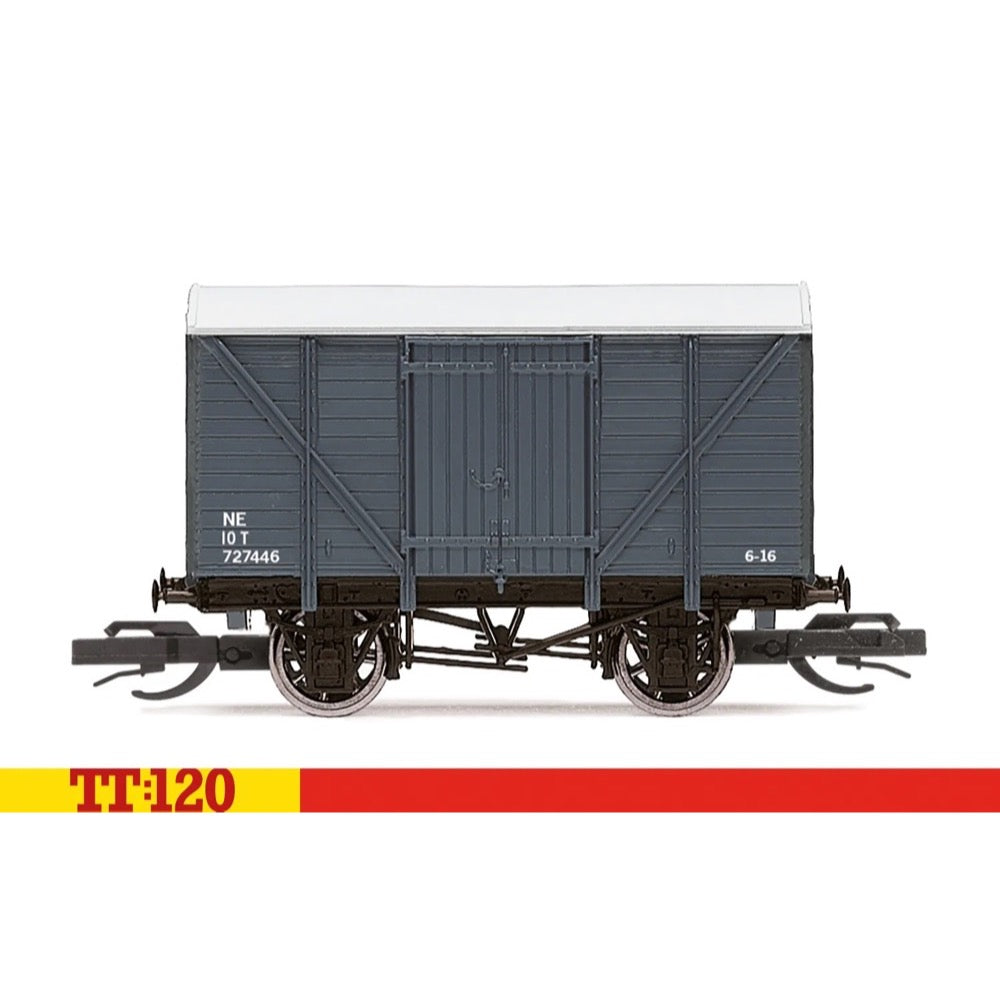
Hornby TT6005 TT LNER Vent Van 727446
The vent van was a small multipurpose goods van which would transport all manner of items whilst keeping them protected from the wind and rain. The wagon design features a single vent on each end of the structure allowing air to flow thereby maintaining a cooler air temperature, beneficial for the transportation of perishable food items. Closed vans would often be loaded with all manner of miscellany such as flour, meat, parcels or perhaps scale models.
Specification
- Item Length - Without Packaging (cm): 6.6
- Item Height - Without Packaging (cm): 3
- Item Width - Without Packaging (cm): 2.2
- Item Scale: 1:120 Scale
- Finish: Painted
- Colour: Brown
- Gauge: TT
- Operator: LNER
- Designer: LNER
- Livery: LNER
- Minimum Curve (mm): Radius 1
- Number of Parts: 1
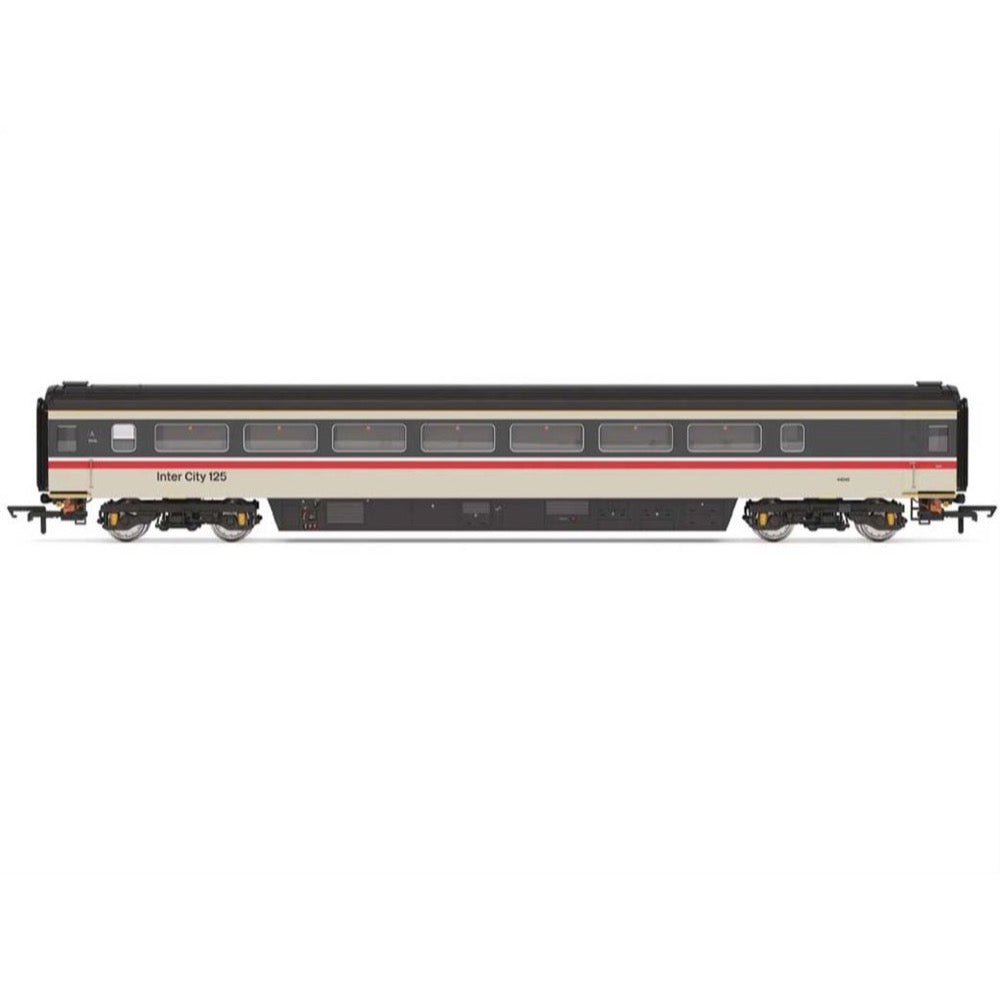
Hornby R40236 OO BR InterCity Mk3 Trailer Guard Standard 44042 Era 8
In-order to allow running at 125 mph on Britain's Victorian era railways, new rolling stock was needed by British Railways. Significant improvements over the Mk2 included new secondary air suspension between the bogies and the coach body as well as aerodynamic skirting on the underframe.
Mk3 coaches are 75ft (23m) long enabling far greater capacity than older coaches. Mk3 coaches also incorporate disk brakes and wheel slip protection enabling faster deceleration. The first Mk3 coaches to be delivered were used as part of the HST prototype along with the two Class 41 diesel power cars in 1972.
Mk3 coaches entered service in 1975 along with the Class 43 forming the iconic InterCity 125 trainset. After the HST Mk3 coach variant was introduced, further Mk3 coaches were introduced to the West Coast Mainline for use as part of locomotive hauled trains. Whilst Mk3 stock is standard for HST units, the standard locomotive hauled stock is Mk3a.
Mk3a stock differs from Mk3 stock due to the inclusion of buffers as well as a different electrical system that uses motor generator units in each coach to power air conditioning and other ancillaries Mk3a stock was built until 1984, before 3B stock with improved seating and lighting was built from 1985 to 1988.
After their brief stint in the BR Blue and Grey colour scheme the Mark 3 coaches saw a livery change in line with a corporate rebrand of high speed services. The new InterCity livery saw the coaches painted in a darker grey colour with a beige stripe along the top and bottom of the coaches with a red stripe under the windows. This livery was designed to emulate or copy the advanced yet ultimately fruitless APT project.
This livery would largely remain unchanged even after a further rebrand to Intercity Swallow, before the coaches would transfer into private ownership at the end of BR. These Mk3 coaches include the provision for lighting provided by the R7305 Maglight lighting unit, as well as fully detailed interiors and metal wheels throughout. For the first time, these coaches also include our new Buckeye style magnetic couplings.
Specifications
- Item Length - Without Packaging (cm): 30.3
- Item Height - Without Packaging (cm): 5.5
- Item Width - Without Packaging (cm): 3.5
- Item Weight - Without Packaging: 0.158
- Item Scale: 1:76 Scale 00 Gauge
- Finish: Painted
- Colour: Grey
- Gauge: OO
- Operator: BR
- Designer: BREL
- Livery: BR Intercity Grey
- Minimum Curve (mm): Radius 2
- Number of Parts: 1
- Coupling Type: NEM Tension Lock
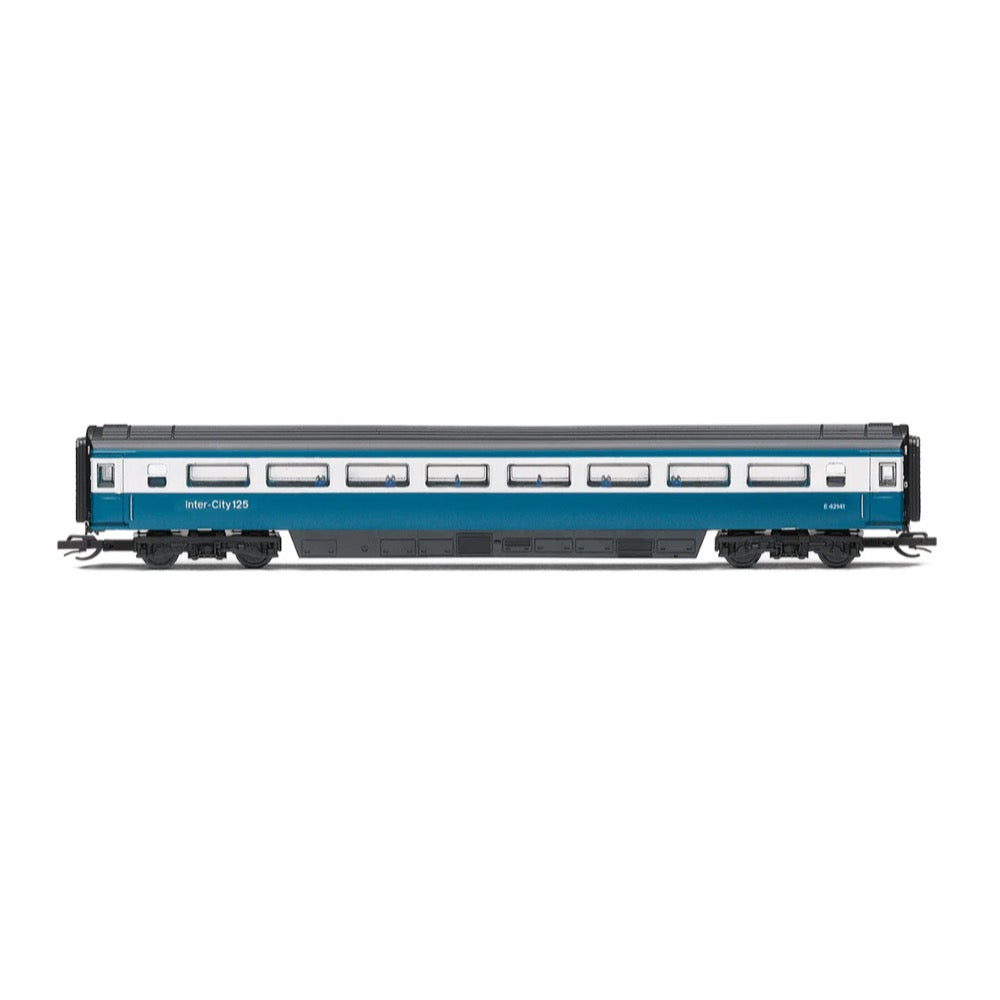
Hornby TT4023B TT BR Intercity Mk3 Tourist Standard Open E42141
In-order to allow running at 125 mph on Britain's Victorian era railways, new rolling stock was needed by British Railways. Significant improvements over the Mk2 included new secondary air suspension between the bogies and the coach body as well as aerodynamic skirting on the underframe.
Mk3 coaches are 75ft (23m) long, enabling far greater capacity than older coaches. Mk3 coaches also incorporate disk brakes and wheel slip protection enabling faster deceleration. The first Mk3 coaches to be delivered were used as part of the HST prototype along with the two Class 41 diesel power cars in 1972. Mk3 coaches entered service in 1975 along with the Class 43 forming the iconic InterCity 125 trainset. After the HST Mk3 coach variant was introduced, further Mk3 coaches were introduced to the West Coast Mainline for use as part of locomotive hauled trains. Whilst Mk3 stock is standard for HST units, the standard locomotive hauled stock is Mk3a. Mk3a stock differs from Mk3 stock due to the inclusion of buffers as well as a different electrical system that uses motor generator units in each coach to power air conditioning and other ancillaries Mk3a stock was built until 1984, before 3B stock with improved seating and lighting was built from 1985 to 1988.
The Mark 3 coaches were introduced into service with the Class 43s as the Intercity 125 service. This top flight service was dressed in a variation of BR Blue with a grey window surround. The Class 43s would be painted in a complimentary colour scheme with yellow noses for safety reasons. The Mark 3 coaches would continue in service in this scheme until the late 1990s. In preservation, some of these coaches have had this distinctive livery reapplied.
Specifications
- Item Length - Without Packaging (cm): 19
- Item Height - Without Packaging (cm): 2.2
- Item Width - Without Packaging (cm): 2
- Item Weight - Without Packaging: 0.05
- Item Scale: 1:120 Scale
- Finish: Painted
- Colour: Multiple
- Gauge: TT
- Operator: BR
- Designer: BR
- Livery: BR Blue and Grey
- Minimum Curve (mm): Radius 1
- Number of Parts: 1
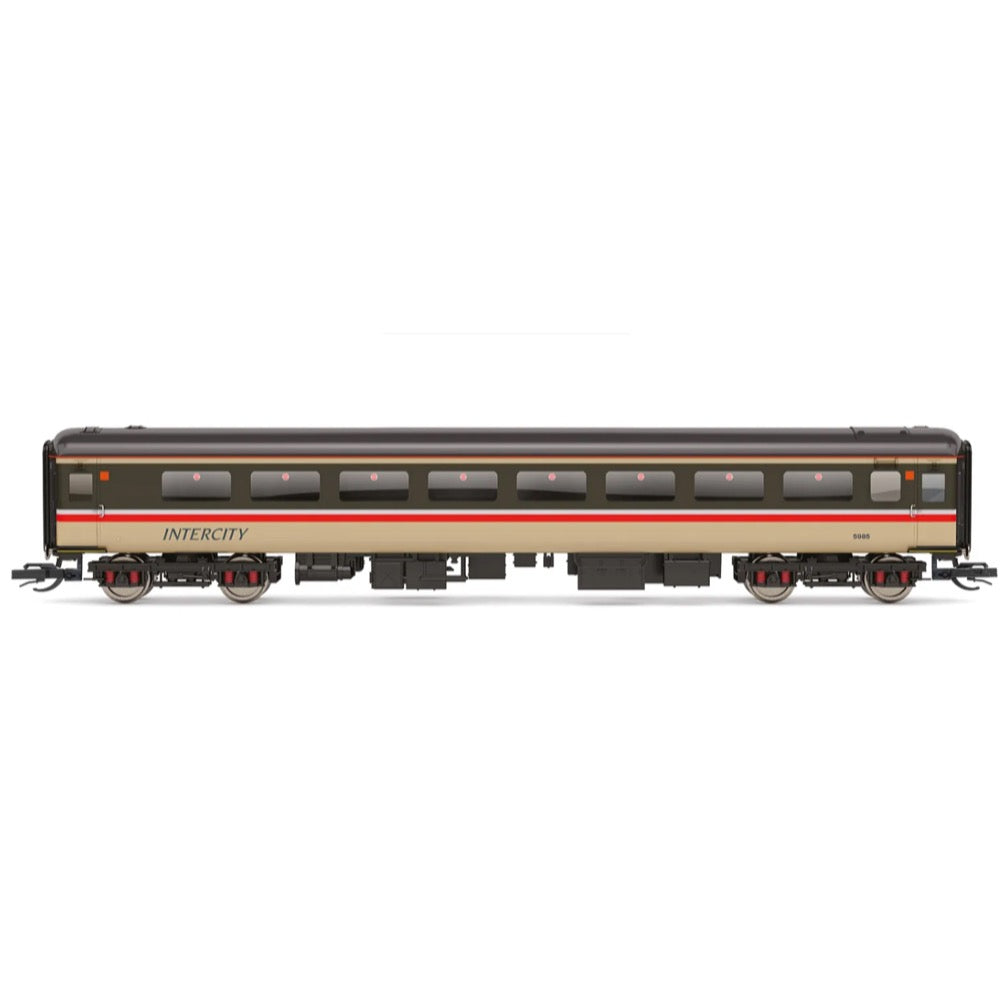
Hornby TT4020 TT BR Intercity Mk2F Tourist Standard Open 5985 - Era 8
The British Rail Mark 1 coaches were not suitable for higher speed rail services, with the Mark 1 coaches being a perfect compliment for steam locomotives which saw themselves being replaced by diesel and electric locomotives as the 1960s progressed. The Mark 2 coach was introduced in 1964 and was all steel. While the Mark 2 was a progression of the Mark 1, the two shared almost no common parts, and only a passing resemblance.
In service, the Mark 2 coaches were commonly seen in the BR Blue and Grey livery and Network South East colours. The coaches were mainly hauled by larger express diesel and electric locomotives such as the Class 40, 47 and 86. As of 2022, the only Mark 2 coaches still in service are those that are part of the Network rail fleet.
The Mark 2 F sub categories had plastic internal panelling with new style seats. Visually they were similar to the Mark 3 coach although there were obvious differences between the two with the length being the most notable. The coaches also had heating and air conditioning as debuted on the Mark 3 prototypes.
Specifications
- Item Length - Without Packaging (cm): 16.8
- Item Height - Without Packaging (cm): 3
- Item Width - Without Packaging (cm): 2.2
- Item Weight - Without Packaging: 0.04
- Item Scale: 1:120 Scale
- Finish: Painted
- Colour: Blue
- Gauge: TT
- Operator: BR
- Designer: BR
- Livery: BR Blue and Grey
- Minimum Curve (mm): Radius 1
- Number of Parts: 1
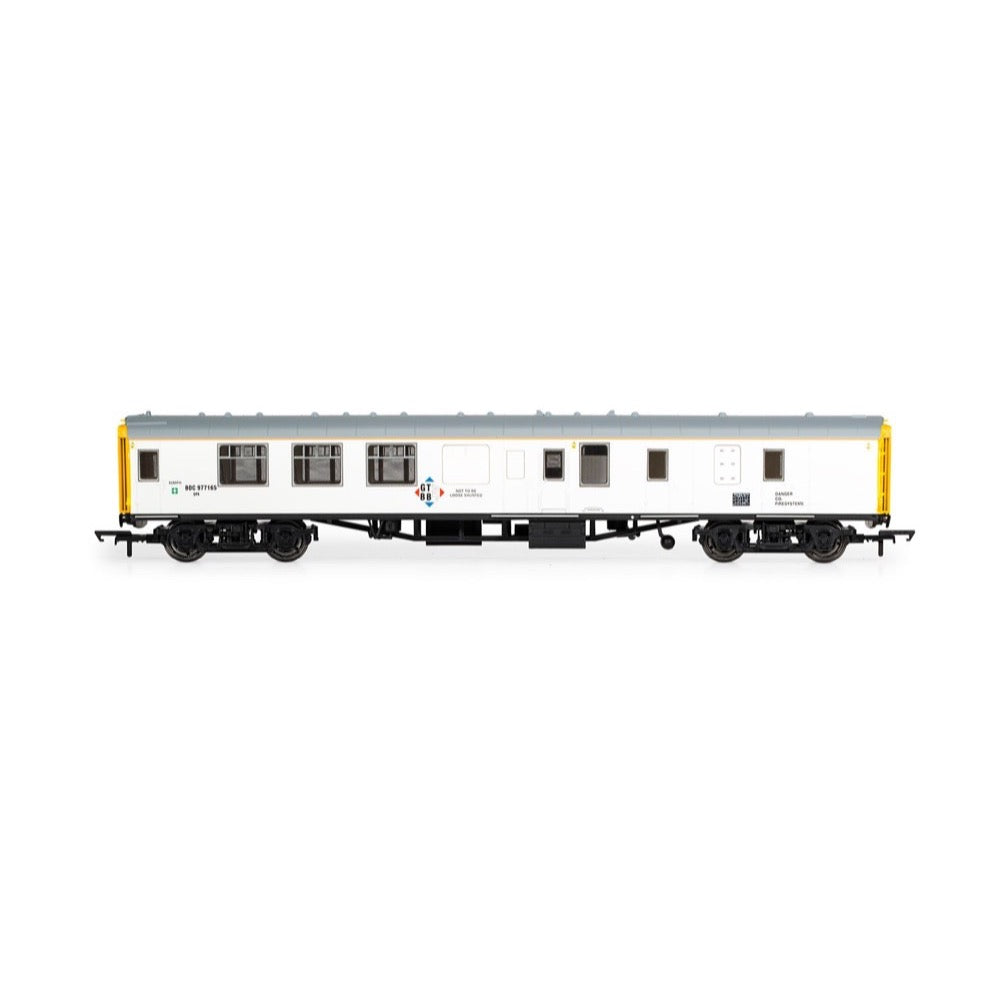
Hornby R40213 OO Balfour Beatty Mk1 BCK Staff Coach BDC 977165
The first standardised railway carriage design built by British Railways, the Mark 1 Coach introduced in 1951 continued to be produced until 1963, and even later in the form of multiple units and non-passenger stock. Mk1 Coaches were built in various places including Derby, Doncaster, Eastleigh, Swindon, Wolverton and York.
Includes
- 1x Rolling stock Coach
Technical Specifications
- Item Length - Without Packaging (cm): 26.5
- Item Height - Without Packaging (cm): 5
- Item Width - Without Packaging (cm): 3.5
- Item Weight - Without Packaging: 0.14
- Item Scale: 1:76 Scale 00 Gauge
- Finish: Painted
- Colour: White
- Operator: BR
- Designer: BR
- Livery: Balfour Beatty
- Minimum Curve (mm): Radius 2
- Number of Parts: 1
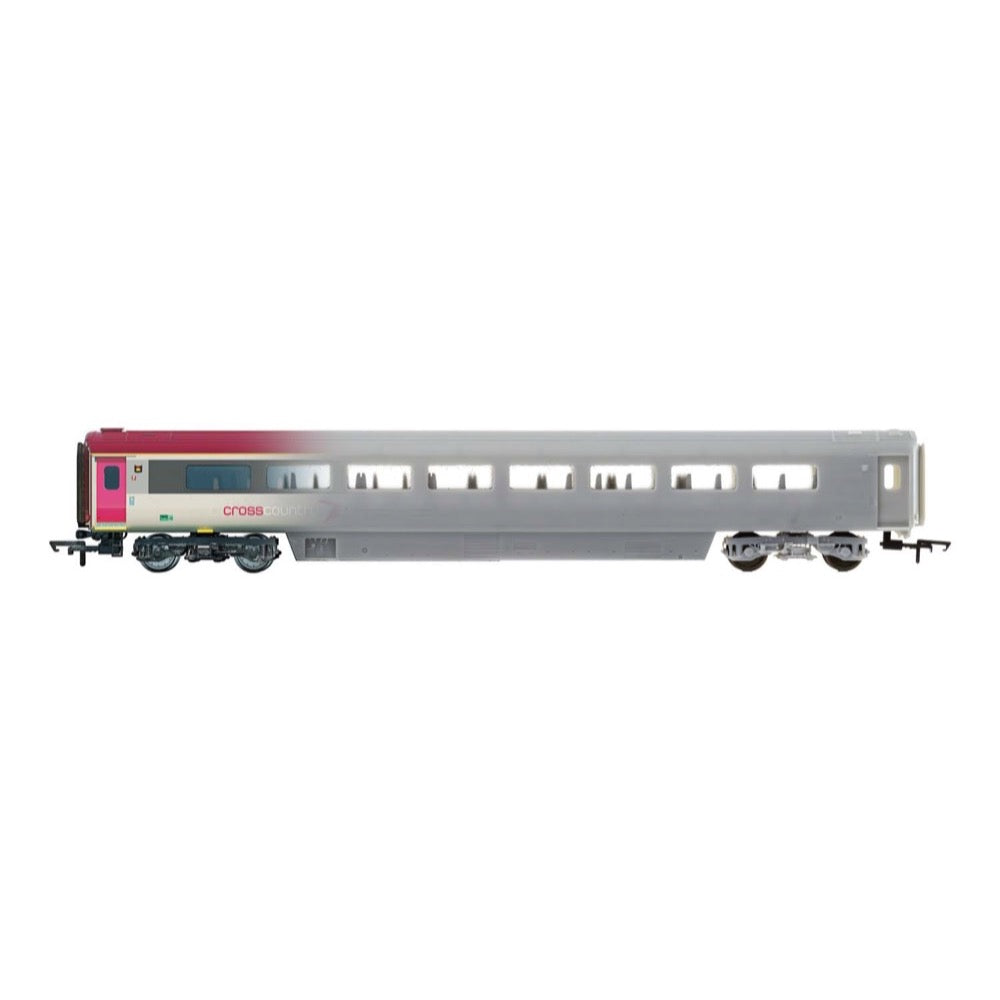
Hornby R4939B Cross Country Trains Mk3 Sliding Door TSD - Era 11
Hornby R4939B Cross Country Trains Mk3 Sliding Door TSD Coach Number 42380
Specifications
- Operator/Livery: Cross Country, Purple/Grey
- Livery Finish: Pristine
- Length: 303mm
- Period/ERA: Era 11 (2014 +)
- Type/Class: BR Mk.3 TSD Trailer Standard Disabled
- Designer: Wabtec Doncaster
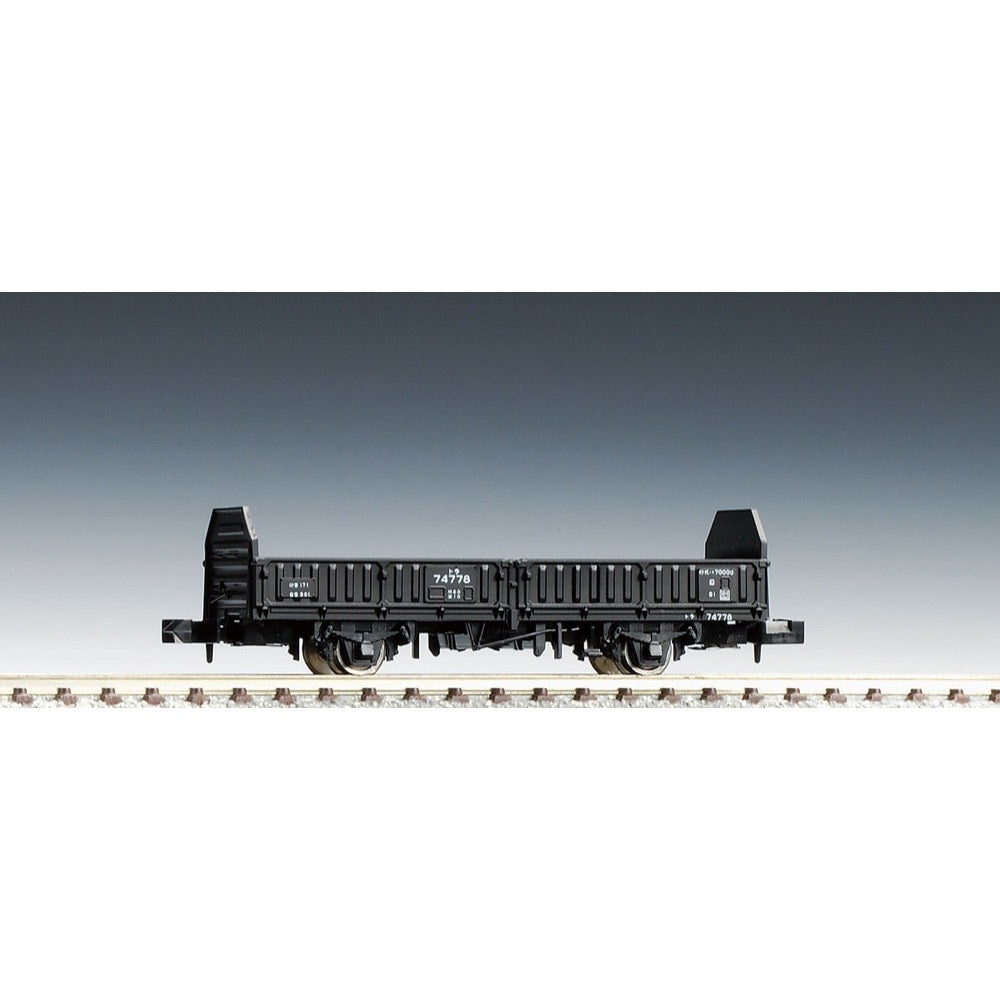
Tomix 2713 N Wagon Tora 70000
This is an open-top freight car for transporting gravel and other cargo that can get wet. It is the most popular open-top two-axle freight car, with approximately 5,100 manufactured. It was introduced in 1967 (S42), with the sides made entirely of steel instead of wood.
Features
- Can pass through mini curves (when coupled with a locomotive capable of passing through mini curves)
- Underfloor with improved track density and unique brake lever shape
- Silver wheels
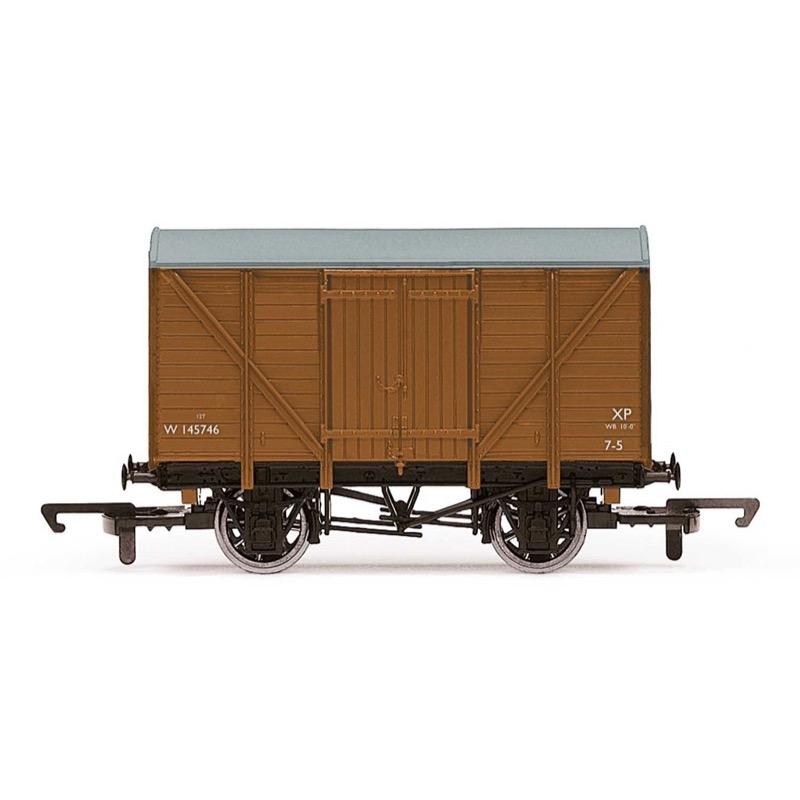
Hornby R60027 OO BR Vent Van
A small multipurpose goods van which would transport all manner of items whilst keeping them protected from the wind and rain. This wagon features a twin vent design allowing air to flow thereby maintaining a cooler air temperature.
Specification
- Item Length - Without Packaging (cm): 8
- Item Height - Without Packaging (cm): 5
- Item Width - Without Packaging (cm): 3.5
- Item Weight - Without Packaging: 0.03
- Item Scale: 1:76 Scale 00 Gauge
- License: No
- Finish: Painted
- Colour: Brown
- Gauge: OO
- Operator: BR
- Livery: BR
- Minimum Curve (mm): Radius 1
- Number of Parts: 1
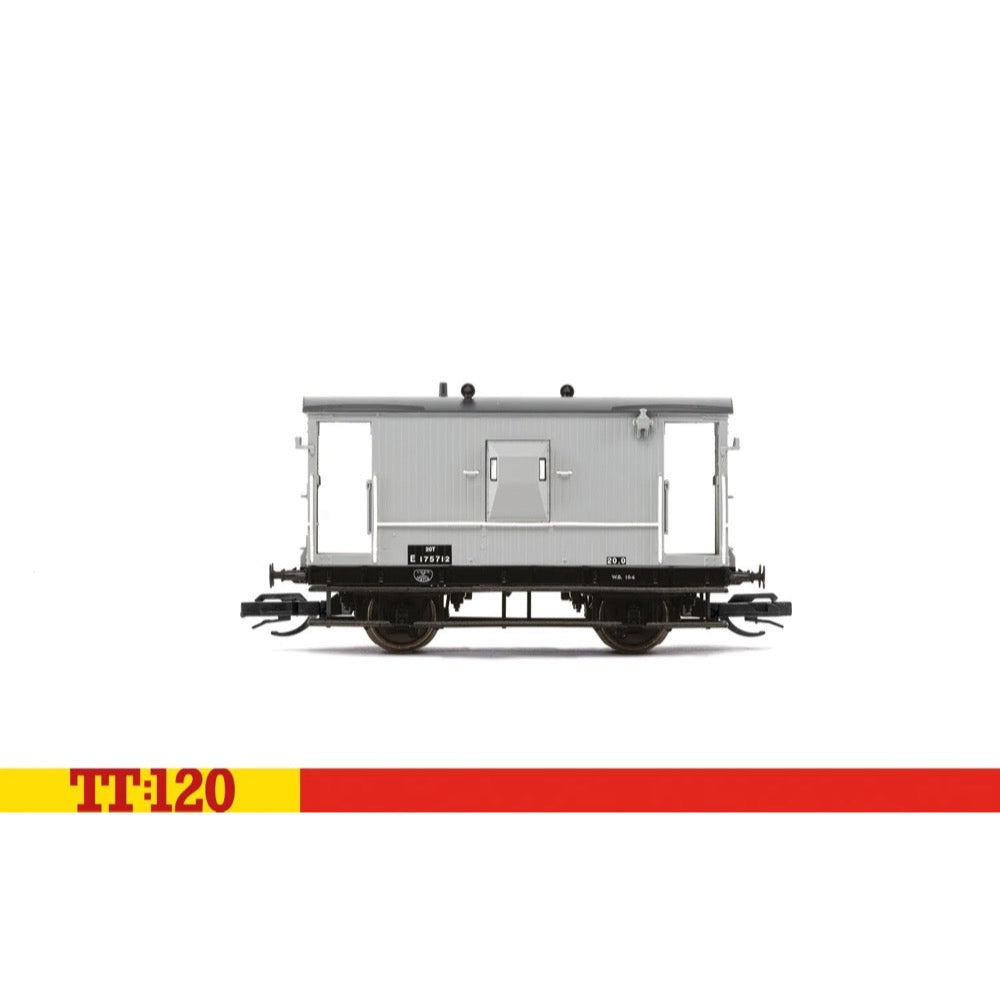
Hornby TT6012 TT BR Dia.064 Toad E Brake Van E175712
In the days of the railways when long trains of cargo would be assembled almost ad hoc, it was not practical to hook up brake lines on every wagon. With the need to drop of cargo at many different locations and sometimes in an order requiring some shunting it would not have been practical to disconnect and reconnect brake lines all the time, assuming that this would even be possible across the myriad of different wagon manufacturers of the day. Such trains were referred to as ‘unfitted’.
The logical solution would be to have a dedicated vehicle specifically for the purpose of slowing and stopping the train. A guard would be stationed in the van, often with a small log burner for heat, and would apply strong brakes by means of a wheel internally. When accompanying the locomotive brakes this would bring the train to a controlled stop. On longer, heavier trains there would often be a second brake van immediately after the locomotive to aid the braking force at the front of the train.
Specification
- Item Length - Without Packaging (cm): 6.5
- Item Height - Without Packaging (cm): 2.7
- Item Width - Without Packaging (cm): 2.1
- Item Scale: 1:120 Scale
- Finish: Painted
- Colour: Grey
- Gauge: TT
- Operator: BR
- Designer: BR
- Livery: BR
- Minimum Curve (mm): Radius 1
- Number of Parts: 1
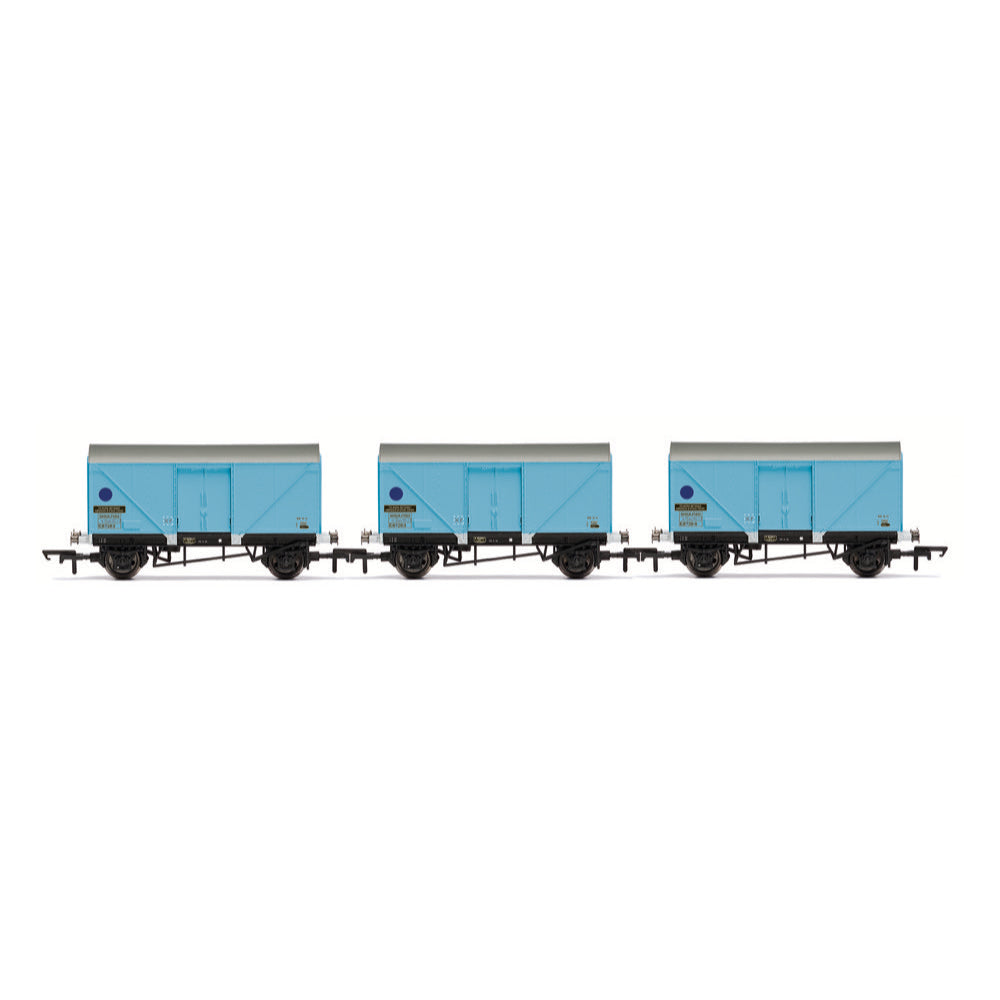
Hornby R60115 OO 12T Fish Van Three Pack BR
Supplying goods and cargo for many hundreds of steam locomotives, the Coal Wagon is a practically universal feature of the railway, part of the scenery as surely as the sight of a station or a locomotive. Serving a maritime nation famous for its Navy, Merchant Navy, beautiful waters and seafood, a Fish Van transports one of the more popular consumable goods across the countryside from harbour to far inland.
Specifications
- Item Length - Without Packaging (cm): 15.5
- Item Height - Without Packaging (cm): 4.6
- Item Width - Without Packaging (cm): 9
- Item Weight - Without Packaging: 0.1
- Item Scale: 1:76 Scale 00 Gauge
- Finish: Painted
- Colour: Blue
- Operator: BR
- Designer: BR
- Livery: BR Blue
- Minimum Curve (mm): Radius 1
- Number of Parts: 3

SDS Models HO HO VR VTQY 10000 Gallon Tank Car 3 Pack B
10000 Gallon Rail Tank Car Series
SDS Models is producing a range of 10 000 gallon rail tank cars based upon a standard VR design 38 foot welded underframe. These HO Gauge models are presented with four unique, oil company specific, tank designs and accurately portrait the prototypical differences between each companies versions to meet their intended requirements. The models cover all major brands used in Victoria with the exception of the Shell Oil Company whose fleet rode on 36 foot riveted underframes.
The models are available in triple-packs and are categorised into three groups:
- OT - as delivered in the early 1950s to the early 1960s TW / TWF - 1960s to the late 1970s
- VTQA / VTQF / VTQY - 1980s and 1990s.
Model Features:
- Highly detailed Ready-to-Run HO scale model
- Injection moulded high quality plastic body
- Etched metal walkways
- Full brake rigging and underfloor detail
- Semi scale metal rimmed wheels
- OT bogie, 5’11” wheelbase with 36" diameter wheels.
- Genuine Kadee #158 whisker coupler
- 18” Minimum radius recommended
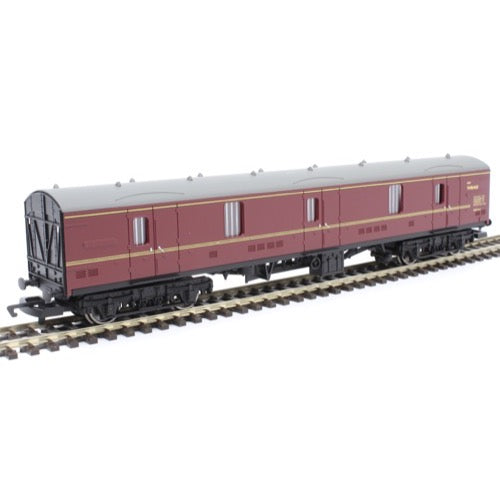
Hornby R4936 BR GUV W86468 Era 5
The BR, GUV, W86468 - Era 5 coach is amongst a vast number of British Railways' coaches designed during the Era 5 period of 1956-1968.
With a distinctive maroon and gold streak painted finish and measuring 238mm, why not order yours today for your railway collection or scenery?
Specification
- Item Scale: 1:76 Scale 00 Gauge
- Colour: SR Green
- Gauge: OO
- Operator: British Railways
- Designer: British Railways
- Livery: Maroon
- Minimum Curve (mm): Radius 2

